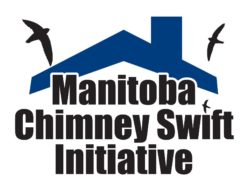
June 21st. Summer Solstice. The longest day of the year in the northern hemisphere. In ancient Asia, Summer Solstice was the time to celebrate the Earth and “yin” forces. Summer Solstice continues to be a significant Heritage Day for Indigenous cultures.
Summer Solstice is associated with change, nature, and new beginnings. For breeding Chimney Swifts, the time around this solstice is the beginning of a new stage of nesting – incubation.
Chimney Swifts have moved through the early stages of nesting. In the arrival stage, spring migrants used sites for nighttime roosting only. Then, breeding pairs of adult swifts began daytime activities inside chimneys and nest building was underway. Both parents would grab small diameter twigs from dead branch ends and fly them into their nest sites. The twigs were attached to the rough interior wall, using the swift’s sticky saliva, to form a small cup-shaped structure. Here are some basic timelines for the nest building to egg laying stages of nesting:
- A nest under construction is ready to hold an egg after 7 days.
- Egg laying may then start and a new egg is laid every second day. The nest continues to be built around laid eggs – it is a tricky process!
- Clutch size is 2–7 eggs. There is no way of predicting how many precious eggs will be laid; energy reserves of the female, weather, and foraging potential etc. may all affect the clutch size, and therefore, the onset of incubation.
- Incubation begins with the second to last egg laid and lasts 18-21 days. Additional twigs are added to the nest during this phase.
Our dedicated monitors are nearing the last Wednesday MCSI spring monitoring night and have finished the NRMP evening counts. If your swifts have been arriving in pairs, as Gerald aptly describes in “Noah” fashion, it is likely the chimney is being used as a nest site. For those of you who are captivated by this Chimney Swift activity and are lured by what will follow, there are ways to track nest site developments…we welcome your ongoing participation in chimney-side monitoring beyond the end of our spring roost monitoring!
Continued monitoring, ideally with maximum 3-to-4-day intervals – including daytime sessions as you can manage – will help reveal the swift’s progress. As monitors, we record the times of entry and exit events at the chimney. It is simple data to collect but it informs many complex things. Importantly, the sequence and frequency of entry and exit events at a nest site reflects the various stages of nesting.
Two intervals are useful to calculate:
1. The time between an entry and an exit. This interval can be either a length of time a single swift spends in the chimney = duration-in OR a turnaround time for partner exchanges when mates take turns with duties inside the chimney.
2. The time between an exit and an entry. This interval is the time between-visits to the nest site.
Sequential entries and exits can be used to estimate the maximum number of swifts in the chimney at one time.
Also, look at the sequence of events to determine if any swifts were present at the start of your observation period and/or if any swifts remain inside at the end of viewing.
During the late nest building-egg laying stage, pairs of Chimney Swifts are seen together less often. The chimney is occupied, or attended by a swift, for a greater proportion of time. So, entries and exits tend to shift to single bird events and they occur less frequently. If you are in an area with a high concentration of nest sites, lower group sizes of swifts are seen in the air. Monitoring now and through the incubation stage becomes very challenging. Okay, it gets downright boring sometimes!
Pinning down the start of incubation is very, very difficult. What follows is a Rule of Thumb for determining the onset of incubation at a nest site, established by a pair of breeding Chimney Swifts, usually ~2-3 weeks after nest building started (note: this is variable!). Three signs of incubation, in increasing order of certainty, are:
- Good. Attendance >50%. For a standard 60-minute daytime session, a swift is present in the chimney over half the time. A swift is continuing to work on the nest construction, plus laying an egg and/or starting incubation. Both parents can be out of the chimney at the same time.
- Better. Interval between entry-exit <10 minutes. An incoming bird is likely switching up with the partner which goes out to feed. Both partners may be out of chimney at the same time but one tends to return soon.
- Best. Classic incubation exchange = an entry followed by an exit 30 seconds to ~2 minutes later. These exchanges usually occur once an hour. Swifts at this stage are “tight” on eggs and the partners are changing up to share incubating duties between foraging bouts. Both parents may leave the nest site (eggs are unattended) but one usually returns shortly to resume incubation duties. Typically, this happens more as the roosting hour approaches – the parents are getting a last feed, and possibly a drink, before roosting.
Monitoring in St Adolphe has continued since the inaugural year of MCSI activity in the spring of 2007. So, 2021 represents the 15th consecutive year of following the breeding success of swifts using 5 chimneys located in 4 historical buildings along Main St.
This year, swifts arrived in low numbers in mid-May and primarily fed for two weeks. By the end of May, all 5 nest sites were claimed by a breeding pair and nest building finally got underway in earnest on May 31st – about a week later than normal. The cold spring weather was likely a deterrent for the birds to start nest building; instead, they fed and rebuilt energy reserves lost during migration.
Fortunately, swifts at all 5 nest sites were underway with nest building by June 3rd – 4th = the last known starting date of nest building to be followed by a successful breeding outcome.
Incubation was first noted for swifts at Brodeur Bros./Daycare and the Church on June 17th; SE and NE Club Amical on June 18th, and finally at Main St on June 19th. Here are some recent monitoring data which indicate incubation is underway…note the variable activity patterns seen at the 5 nest sites!
Attendance >50%:
- Brodeur Bros./Daycare; Thurs. June 17th; 10:50 to 11:50 AM.
11:04:10 1 Entry
11:17:47 2 Exits; 1 swift in at start of observation period.
11:41:57 1 Entry
- Church; Thurs. June 17th; 12:05 to 1:05 PM.
12:34:34 Entry
1:05 End of session with 1 swift in.
- SE and NE Club Amical; Fri., June 18th; 11:00 AM to 12:00 PM.
11:04:08 Entry – SE; with 1 other swift that flies on; 2 swifts close together on approach.
11:11:39 Entry – NE; alone.
11:39:42 Entry – SE; arrives alone; 2 swifts in.
11:44:23 Exit – NE; alone.
11:46:20 Exit – SE.
11:46:22 Exit – SE; joins above bird and both swifts leave vicinity together; 0 swifts in.
Interval between entry-exit < 10 minutes: Main St; Sat., June 19th; 10:48 to 11:48 AM.
11:13:24 Entry; 1 swift had been feeding locally since the start of observations.
11:23:07 Exit; no further swift sightings seen by the end of the observation period.
Classic incubation exchange: none seen yet, but the time shortly after Summer Solstice will be the period to watch for this sure sign of incubation.
Questions? Keep in touch as we are always happy to help interpret nest site data. Good luck on tracking your breeding Chimney Swifts!
–Barb Stewart
